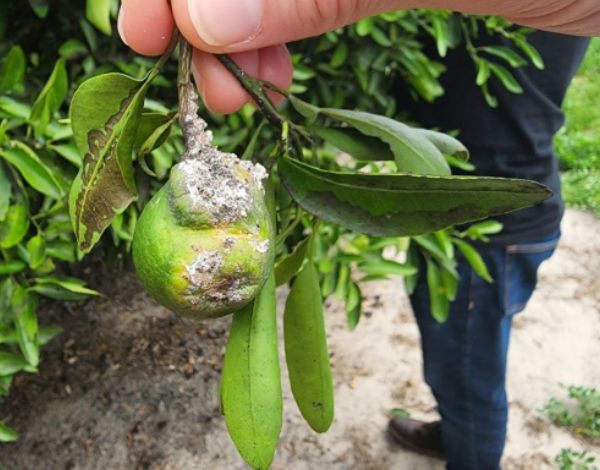Nipaecoccus viridis (Newstead) (Hemiptera: Pseudococcidae)
This mealybug, also known as the Lebbeck or spherical mealybug, invaded Florida in 2009 (Stocks and Hodges 2010), but did not begin causing widespread economic losses until 2019 (Diepenbrock and Ahmed 2020). Hibiscus mealybugs have a very broad host range, having been documented feeding on plants spanning more than 140 genera and 50 families throughout its invaded range across the globe (scalenet.info). There are two main reasons why I have selected this species for classical biological control. One reason is that it presents a clear threat to Florida’s citrus, ornamental, and cotton industries, which are already facing many other challenges. A successful classical biological control program for this insect would improve the long-term economic and ecologic outlook for stakeholders. Secondly, hibiscus mealybugs have a long history of successful classical biological control in other regions such as Guam (Nechols 2003) and Jordan (Meyerdirk et al. 1988), which bodes well for the initiation of classical biological control of hibiscus mealybug in Florida and the southeast. Currently, there are no other research programs on classical biological control of hibiscus mealybug in the USA. My program is still in development but I look forward to sharing updates!
Diepenbrock, L. M., and M. Z. Ahmed (2020). First report of Nipaecoccus viridis (Hemiptera: Pseudococcidae) associated with citrus production in the United States. Journal of Integrated Pest Management, 11(1), 7.
Nechols, J. R. 2003. Biological control of the spherical mealybug on Guam and in the Northern Marianas Islands: a classic example of fortuitous biological control, pp. 324–329. In 1st Int. Symp. Biol. Control Arthropods.
Meyerdirk, D. E., S. Khasimuddin, and M. Bashir. 1988. Importation, colonization and establishment of Anagyrus indicus [Hym.: Encyrtidae] on Nipaecoccus viridis [Hom.: Pseudococcidae] in Jordan. Entomophaga. 33: 229–237.
ScaleNet. (n.d.). Nipaecoccus viridis. Retrieved April 21, 2023, from https://scalenet.info/catalogue/Nipaecoccus%20viridis/
Stocks, I., and G. Hodges. 2010. Pest Alert : Nipaecoccus viridis (Newstead), a new exotic mealybug in South Florida (Coccoidea: Pseudococcidae). Pest Alert.

Hibiscus mealybug on citrus. Photo credit: N.F. Quinn
